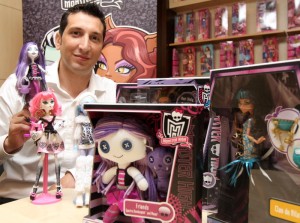BY FOO JEAN-NI
alltherage@rage.com.my
IN most bullying cases, the focus is (rightly) on the victims and how they feel. But what about the bullies? What could possibly drive someone, very often just a regular teenager, to resort to such ugly behaviour?
Ashley (not her real name) had her first taste of being a bully after lashing out at three girls in school when she was 15. Looking back, she says her actions gave her a sense of superiority, satisfaction and empowerment.
“It wasn’t necessary, but at that moment, it seemed like the perfect opportunity to vent out at someone,” she said. “It felt amazing at first, to shout at them and embarrass them, but I felt bad later when I found out they’d left school.”
Ashley’s bad habit of using strangers as her “punching bag” eventually started to affect her emotionally, and her overall academic performance suffered as well.
“I was bullying so much that even when things didn’t involve me, my name still came up. With my reputation, it was hard for teachers to believe I wasn’t involved.
“When I was 17, I was told by my teachers not to show up at school so I would stop getting into trouble.”
Ashley, now 19, admits she feels terrible and ashamed for what she did.
With the help of her mother and a psychologist, she eventually learned to stop venting her anger at others.
“It might feel good for awhile, but bullying only gives you temporary satisfaction.
“It’s important to know that there are other ways to make yourself feel better and that bullying victims do not deserve to be treated that way,” she said.
Psychologist weighs in
HELP University Faculty of Behavioral Sciences dean Dr Goh Chee Leong, believes that bullying happens when there is a difference in power. It could be a difference in age, physical size, strength, the number of people, intelligence or status; and their motives for bullying can be very different as well.
“Some bully for a sense of power and control and some as an outlet to vent their anger.
“It could also be because of family issues, or maybe because they’ve been bullied themselves. Some bully because they are narcissistic, and some simply just to fit in,” he said.
Goh added that victims of bullying would most commonly lose self-esteem, do badly at school, or fall into a state of depression.
“Victims tend to blame themselves for the bullying. They may also revert to bullying others to regain their sense of power and control,” said Goh.
Self-acceptance
Mattel, the company that introduced Barbie and Hot Wheels, recently launched a range of dolls in Malaysia called Monster High, featuring Frankie Stein, Draculaura and Howleen Wolf – the teenage children of legendary monsters, like Frankenstein, Dracula and Werewolf. They are certainly not your typical Barbie dolls.
Mattel North and Southeast Asia commercial director Anthony Frangos said the aim of the dolls is to encourage self-acceptance among teenagers, and to create awareness on the issue of bullying.
“We’ve got a property that celebrates the differences in everybody in a positive light. We want to promote the fact that it’s perfectly okay to be yourself.”
To help further the cause, Mattel collaborated with Lauren Parsekian, 24, and Molly Thompson, 23, founders of the Kind Campaign in the United States.
Parsekian and Thompson started the campaign in 2009 to raise awareness on girl-against-girl bullying among teenagers, having both been victims themselves. The message of the campaign is simple – it’s cool to be kind, and the girls have been spreading their message to hundreds of schools in the United States.
As part of the collaboration, Parsekian and Thompson were “monsterfied” to appear in a Monster High webisode, which you can watch at monsterhigh.com. The short video featured Parsekian and Thompson as cartoon versions of themselves, facilitating a Kind Campaign school assembly and teaching self-acceptance to the students of Monster High, many of whom were lashing out at each other because they were struggling with their own insecurities.
Don’t feel victimised
As much as it is important to understand the struggles of a bully, Goh stresses that it is essential for victims to never blame themselves or to feel helpless and trapped.
“There are always options available, whether it is ignoring the bullies or standing up to them.”
Victims should seek advice from someone they trust, and parents and teachers who witness the bullying should not take it lightly.
“It doesn’t help that we sometimes see bullying as a natural interaction between children. To curb bullying, parents, teachers and authorities should have zero tolerance towards it,” said Goh.
Bullying isn’t a problem you can just leave behind after school – it happens at work too! The Dec 10 issue of StarTwo will feature a story on workplace bullying, an equally serious issue.
Join R.AGE’s #iwasbullied campaign to help get rid of this ‘disease’. Log on to facebook.com/thestarRAGE and complete our anti-bullying survey.


Tell us what you think!